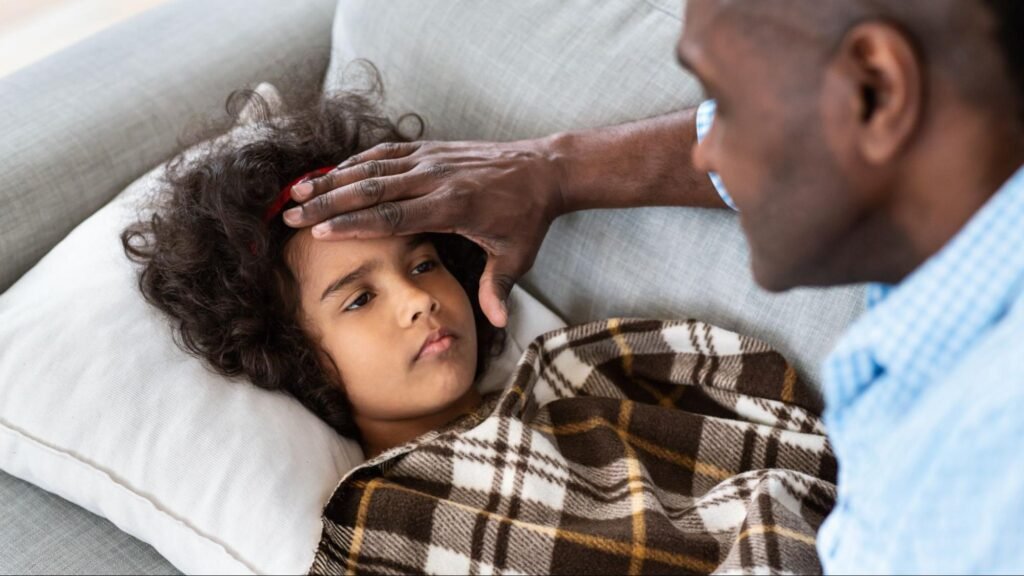Colds are a common part of childhood, but sometimes what seems like a routine illness can turn into something more serious. As a parent, it’s important to know when your child’s symptoms require extra care—and when they signal a medical emergency.
At First Priority ER in New Braunfels, TX, we provide 24/7 emergency pediatric care to ensure your child receives the right treatment when they need it most. If you’re ever unsure whether to take your child to the ER, this guide will help you recognize red flag symptoms that shouldn’t be ignored.
Common Cold Symptoms in Children
Most colds in children are caused by viruses, meaning they will run their course without the need for antibiotics. Typical cold symptoms include:
- Runny or stuffy nose
- Sneezing and coughing
- Mild fever (under 101°F)
- Sore throat
- Fatigue
- Mild body aches
These symptoms usually resolve within 7 to 10 days, and home care—like rest, fluids, and over-the-counter medications (as recommended by a pediatrician)—can help your child recover.
However, some cold symptoms shouldn’t be ignored and may require immediate medical attention.
When to Take Your Child to the ER for a Cold
1. Difficulty Breathing
If your child is struggling to breathe, this is a medical emergency. Signs of breathing distress include:
- Rapid breathing or flaring nostrils
- Wheezing or grunting noises when breathing
- Bluish lips or fingernails (a sign of low oxygen)
- Pulling in of the skin around the ribs or neck while breathing
Breathing difficulties can indicate conditions like bronchiolitis, pneumonia, or croup. If your child is having trouble breathing, visit First Priority ER immediately.
2. High Fever That Won’t Go Down
A fever is the body’s natural response to fighting an infection, but certain fevers in children require emergency care:
- Infants under 3 months: Any fever above 100.4°F
- Children 3-12 months: Fever above 102°F that won’t go down with medication
- Children of any age: Fever over 104°F
- Fever with seizures, confusion, or difficulty waking up
If your child’s fever is persistent, excessively high, or accompanied by other concerning symptoms, seek medical care right away.
3. Signs of Dehydration
Colds can sometimes cause a loss of fluids, especially if your child isn’t drinking enough or has vomiting and diarrhea. Signs of dehydration include:
- Dry mouth or no tears when crying
- Sunken eyes or soft spot on the head (in infants)
- No urination for 8+ hours
- Lethargy, irritability, or extreme drowsiness
If your child is showing signs of severe dehydration, they may need IV fluids to restore hydration levels. Visit First Priority ER for fast treatment.
4. Persistent Vomiting or Diarrhea
While some stomach upset can come with a cold, repeated vomiting and diarrhea can quickly lead to dehydration. Go to the ER if your child:
- Can’t keep fluids down for more than 6 hours
- Has bloody vomit or diarrhea
- Shows signs of dehydration (as mentioned above)
Stomach viruses and infections can be severe in young children, making emergency care necessary in certain cases.
5. Extreme Fatigue or Unresponsiveness
If your child is unusually drowsy, difficult to wake, or unresponsive, it could indicate a serious infection, high fever complications, or dehydration.
Other red flag symptoms include:
- Limp or weak body
- Difficulty staying awake
- Seizures or convulsions
If your child is acting abnormally lethargic, visit the ER immediately for evaluation.
When a Cold Becomes Something More Serious
Colds often start mild, but they can develop into secondary infections that require medical treatment. Watch for these warning signs:
Pneumonia
- Cough with thick mucus
- High fever (102°F or higher)
- Fast, shallow breathing
- Chest pain when breathing or coughing
Bronchiolitis (Common in infants)
- Wheezing or noisy breathing
- Difficulty eating due to breathing issues
- Flaring nostrils or chest retractions
Ear Infections
- Ear pain or pulling on ears
- Fever
- Fluid drainage from the ear
Sinus Infections
- Severe nasal congestion lasting more than 10 days
- Facial pain or swelling
- Thick yellow or green mucus
If your child’s symptoms worsen or last beyond 10 days, it’s time to see a doctor. Bacterial infections like pneumonia, ear infections, and sinus infections may require antibiotics or additional medical treatment.
Emergency Pediatric Care at First Priority ER in New Braunfels, TX
At First Priority ER, we understand that seeing your child sick can be stressful. Our board-certified emergency physicians provide fast, expert pediatric care for colds, fevers, breathing difficulties, and severe infections.
Why Choose First Priority ER?
- 24/7 emergency care with no long wait times
- Pediatric-friendly treatment for infants, toddlers, and children
- On-site imaging & lab testing to diagnose infections quickly
- IV fluids & breathing treatments for dehydration and respiratory issues
If your child’s cold symptoms seem severe, persist too long, or worsen suddenly, don’t wait—visit First Priority ER in New Braunfels, TX, for expert emergency care.
Final Thoughts
Most colds in children are mild, but certain symptoms signal a need for immediate medical attention. Knowing the difference between a routine cold and a serious health concern can make all the difference in your child’s recovery.
If your child is struggling with high fever, difficulty breathing, dehydration, or unusual lethargy, visit First Priority ER today. Our team is here to provide the urgent, compassionate care your child deserves.



